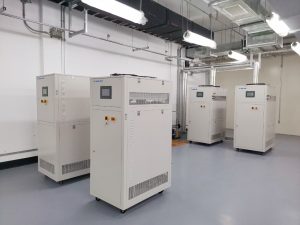LNEYA cryogenically cooled cannabis industry’s evolving extraction method
Related recommendations
-
What determines the price of a brand’s refrigeration and heating circulator?
1581The price of the brand's refrigeration and heating circulator is mainly determined by the three major parts of raw materials, manufacturing costs, and technical costs, which affect the subsequent quotation. The composition of the refrigeration he...
View details -
Fly by dream, create greater glory, [Wuxi Guanya LNEYA] annual ceremony ended successfully
2242Inadvertently2019 has passedThis yearThanks to everyone for the trust and support of Guanya LNEYA Eye-catching gloryFrom every step of the solidThank you all the wayDream-seeking career2020 Let us continue to work together for a win-win sit...
View details -
Description of requirements for installation of glycol chiller
1513Generally, after purchasing the equipmentwith the glycol chiller manufacturer, the installation manual will bedistributed to the user together. So, what should be paid attention to wheninstalling the glycol chiller?In summer, glycol chillers ar...
View details -
Operating Principle of LNEYA Industrial Air Chillers
1571Industrial air cooler is a heat exchanger which USES air to cool the hot fluid. The hot fluid in the tube is heated through the exchange of heat between the tube wall, the fin and the outside air, which is usually supplied by the ventilator. Our I...
View details
 LNEYA Industrial Chillers Manufacturer Supplier
LNEYA Industrial Chillers Manufacturer Supplier














